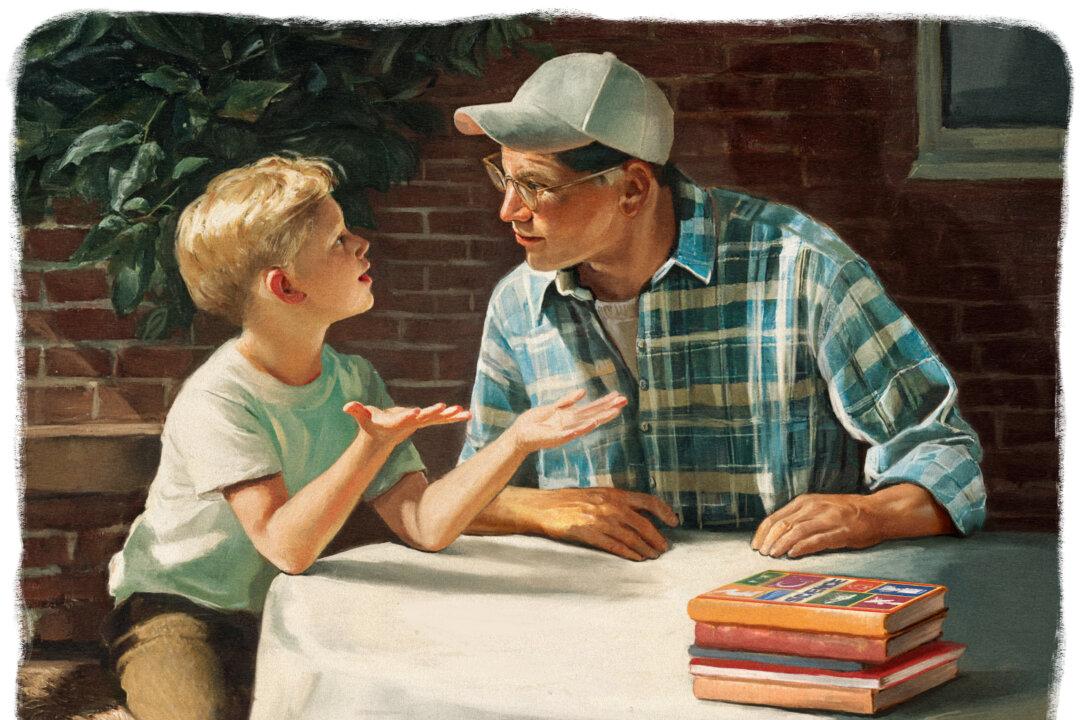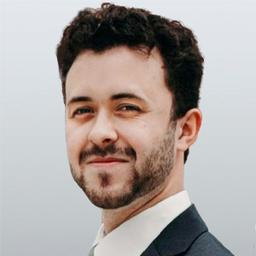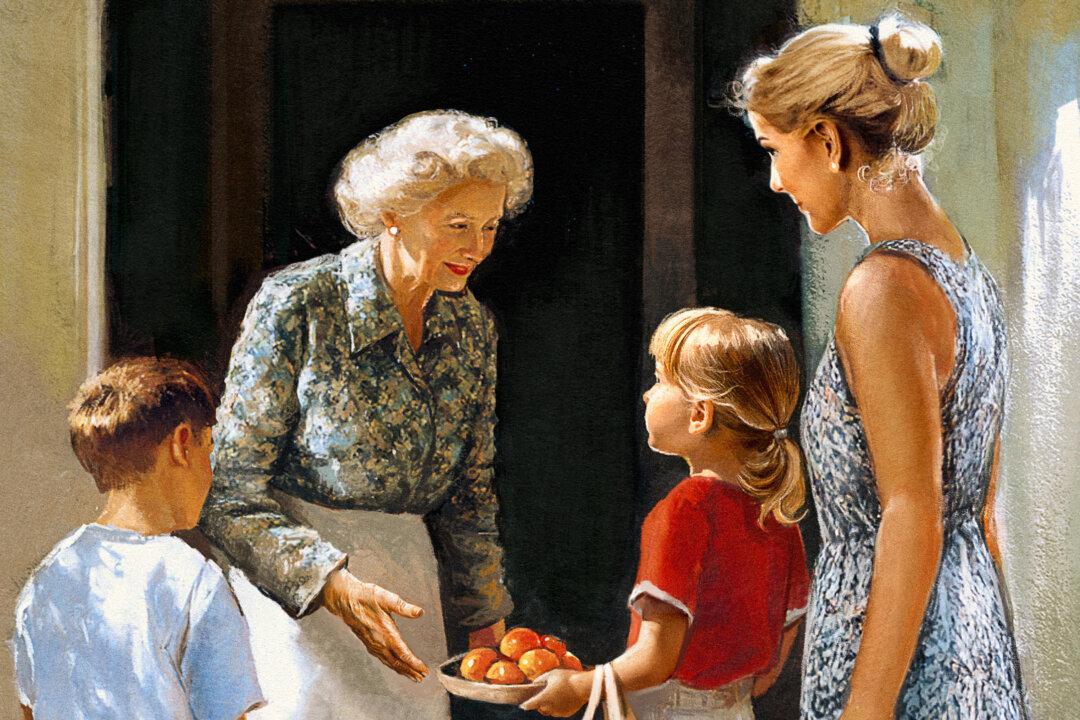The idea that education involves discipline isn’t surprising to most readers. But considering education an “atmosphere” or “a life” might strike contemporary parents and educators as more unexpected or even mysterious. Yet it speaks to the characteristic expansiveness of Mason’s approach. For her, a true education stretched to encompass the entirety of a child’s encounter with the world, like a tree spreading its branches. To achieve this, Mason believed that children’s souls needed to be awakened through an encounter with knowledge.
While notions of education today are likely to evoke images of classrooms, workbooks, textbooks, and GPAs—all of which are confined to one important but limited type of learning—Mason’s ideas of education aren’t restricted to industrial education. In the Mason model, education is more about human development—the full flourishing of the human person—than about test scores and career training.
As Cindy Rushton wrote in “A Charlotte Mason Primer”: “True education takes place in real life. When we begin to see all of life as a classroom, we will truly equip our children to become self-educated, life-long learners, who delight in learning.”
A Lifetime of Learning
Mason was born in 1842 in Bangor, England. Her parents educated her, splitting the subjects between them and incorporating outside supplemental lessons. When Mason was just 16, her mother died, and her father died the following year. At 18, she went to London and entered teacher training college. After her training, she worked at various schools until taking a position at Bishop Otter College in Chichester, where she began training other teachers.Through the course of her experience as a teacher and teacher trainer, as well as her travels abroad, Mason developed the educational philosophy and methods for which she’s now known.
She began lecturing on education, and some of these lectures were transferred into book form. All of this led to the Parents’ Educational Union (later, the Parents’ National Education Union), which produced its own publication, the Parents’ Review.
Key Characteristics of the Charlotte Mason School
At the heart of Mason’s method was the belief that “children are born persons.” As such, they are meant to enter into relationships that fundamentally form and shape them. That understanding provides the framework for Mason’s approach, which the Charlotte Mason Institute calls “Relational Education.” In “An Essay Towards a Philosophy of Education,” Mason wrote:“Education is the Science of Relations; that is, that a child has natural relations with a vast number of things and thoughts: so we train him upon physical exercises, nature lore, handicrafts, science and art, and upon many living books, for we know that our business is not to teach him all about anything, but to help him to make valid as many as may be of—‘Those first-born affinities/ That fit our new existence to existing things.’”
Mason broke down a student’s relationships into four areas: relationship to oneself, relationship to other people, relationship to the universe, and relationship to God.
Relationship to the self develops through self-knowledge, self-respect, and moral formation. Relationships with other people grow by connecting with others across time and space, such as in the study of history or geography, while the student’s relationship with the universe is fostered through direct contact with nature, originating in the child’s exploration and identification of the flora and fauna in his or her own neighborhood. Finally, the student’s relationship with God develops through biblical study and an awareness of God as the source of all truth.
The student in a Charlotte Mason school receives a healthy dose of both book-learning and experiential learning. An educational model that neglects either of these aspects—the training of the body or of the mind—is incomplete. Mason understood that healthy development of the mind and body rely on one another.
The Charlotte Mason Institute (CMI) describes the method’s balanced approach in this way: “Encounters with the written word and the physical world together create a balanced and living curriculum that is expansive enough to stretch and delight students who might naturally gravitate toward one or the other but deserve both.”
Indeed, Mason believed that children deserved to be exposed to a wide variety of the very best ideas, art, and experiences. As she put it in “School Education,” “We owe it to [children] to initiate an immense number of interests.” However, the goal of the approach isn’t quantity only, but quality, too. Mason frequently compared education to an intellectual “feast”—but a feast of healthy intellectual foods that would grow a child’s mind and heart. Rushton explained:
“Charlotte Mason believed that the minds of children need to be fed on the best intellectual food–God’s Word, great literature, fine art, beautiful music, real living history, and direct contact with God’s creation! She taught that children need direct, real-life contact with those real, living ideas.”
Putting It Into Practice
The Charlotte Mason model contains some flexibility. But some core, concrete practices are described in the materials of the CMI and Rushton’s primer on the method. Here are a few:Short Lessons With Variety
For younger students, lessons likely don’t exceed 20 minutes. Older students’ lessons might last 45 minutes. Lessons vary from one instance to the next to help maintain attention and interest. Mason believed that the mind, like the body, needs a variety of foods in order to be healthy and balanced.Emphasis on ‘Living Books’
The CMI recommends books “written by experts passionate about their subjects with well-chosen language, inspiring ideas, and many times in a narrative form.” Frequently, lessons are communicated in a literary and narrative form, which Mason saw as the most natural way for children to process information.Both Structured and Unstructured Time
A mixture allows for a balanced education encompassing more than just books. Mason laid out the basic schedule for the day like this: “All intellectual work is done in the hours of morning school, and the afternoons are given to field nature studies, drawing, handicrafts, etc. Notwithstanding these limitations the children produce a surprising amount of good intellectual work. No home-work is required.”Language Arts Learned Through Great Literature
Students learn to write through narration (retelling what they’ve read), dictation (writing down what is read to them), and transcribing (copying directly from great books). Formal grammar lessons aren’t taught until older ages. The art of writing begins through imitation, according to Mason.Lessons Tailored to Geographical and Cultural Context
Children’s knowledge of the world begins close to home and radiates outward, and this is reflected in Charlotte Mason’s Model. Thus the method promotes “localized learning.” Children first learn about their own biome, for example, before learning about foreign ones. They learn local history before exploring world history and other cultures.Awakening the Student’s Heart
Mason offered many excellent insights into an education that is truly “liberal”—one that frees students to be the best form of themselves. Her methods are applicable for homeschoolers, microschools, and even more innovative public or private schools. Moreover, they can be integrated with other educational models, such as the classical model or the poetic mode of learning developed by John Senior and his colleagues.“The question is not,—how much does the youth know? when he has finished his education—but how much does he care? and about how many orders of things does he care? In fact, how large is the room in which he finds his feet set? and, therefore, how full is the life he has before him?”







